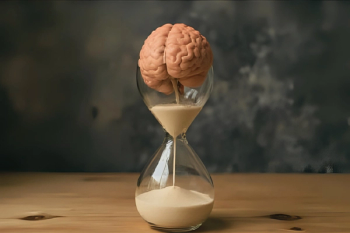
Point of care tear film test simplifies dry eye management
Diagnosing and managing dry eye patients can be challenging. Here Dr Philipp Steven looks at a new way of treating tear film osmolarity, the TearLab Osmolarity System, which he believes could dramatically simplify the process.
Diagnosing and managing dry eye patients can be as challenging as it is rewarding. While there are no shortages of tests with which to evaluate the health of the ocular surface, the majority of tests used today are subjective, making the results difficult to accurately quantify and with limited value in mild to moderate disease. As these tests tend to miss middle to moderate forms of the disease, most clinicians will initiate a series of treatment trials employing artificial tears, punctual plugs or cyclosporine – alone or in combination. These trial and error efforts will frequently result in some patient improvement in comfort and possibly visual function. The time, effort and uncertain outcome of this method, however, is frustrating to both physician and patient.
Even since the advent of the DEWS (Dry Eye Workshop Study) system, which recommends specific interventions based on the patient's dry eye signs and symptoms, a standard for monitoring treatment efficacy remains elusive. The literature shows that tear osmolarity is the single best objective test for diagnosing dry eye. Traditional systems designed to test tear osmolarity require a significant tear volume and often result in reflex tearing and diagnostic variabilities. What's more, time and cost inefficiencies in those early tear osmolarity testing methods relegated them to academic and laboratory settings, leaving a void for private practice ophthalmologists.
More recently a new way of testing tear film osmolarity – the TearLab Osmolarity System (TearLab Corp., San Diego, CA) – is filling that gap and so far, in our clinic, it offers great promise in both diagnosing and monitoring dry eye disease. TearLab is a point-of-care test that can be performed quickly with a tiny sample size to provide objective evidence of hyperosmolarity. It takes about a minute for the operator to use a pen-like device with an automated 'chip' at its tip to gently tap the ocular surface. It requires less than 50 nanoliters (the size of a full stop at the end of a sentence) of tear fluid to measure the salinity level, and results are available in about 30 seconds. The normal osmolarity range of tears is 302 mOsmol/L (s.d. 9.7); TearLab covers the whole range of normal and abnormal values i.e. from 275 to 400 mOsmol/L.
In addition to gathering anecdotal information on the usefulness of this device, we recently performed a small case-control study using the TearLab system in five female subjects suffering from moderate dry-eye. While the number of participants is admittedly limited, we found that when subjects were administered artificial tears and then had their tear film osmolarity checked by TearLab before and 4 weeks after initial treatment, the indication of a decrease in osmolarity correlated well with subjective improvements that we observed in these study participants.
The only challenges we have encountered to date in our use of TearLab is that in instances where the ocular surface is too dry, such as when the Schirmer score measures less than 1, a tear film sample, even as small as 50 nanoliters, may be difficult or impossible to collect, and if the tip of TearLab's data gathering chip is pressed to the ocular surface for too long or too firmly, reflex tearing and/or pain is possible.
As more data are collected, and use of TearLab expands, I suspect its usefulness in the setting of contact lens fitting and associated contact lens induced dry eye, as well as screenings of potential refractive surgery candidates, will be validated. Dry eyes are the most common complication from LASIK, and symptoms of dryness are the number 1 reasons cited for contact lens drop outs.
The use of Schirmer, TBUT, surface staining and detailed history assessment will remain part of my approach to dry-eye diagnosis, and TearLab will augment my approach by providing an easier method of diagnosis and a conduit for effective disease management. Equally important to the process is educating patients about dry eye diagnosis and treatment. Patients need to be informed about the key-pathophysiological mechanisms – tear film instability, hyperosmolarity and inflammation of tears in order to understand – and comply with – their therapeutic regimen.
From a scientific point-of view, TearLab seems to be very useful, but this observation will gather more strength as more solid data become available. I am looking forward, for instance, to the data being gathered by the TearLab Osmolarity System Core Validation Study, a 13-site clinical study that has enrolled almost 300 subjects at sites in the United States, Europe and Japan. Patients with and without a history of dry eye have been included in the study, and results are expected to be announced by the end of the year.
Newsletter
Get the essential updates shaping the future of pharma manufacturing and compliance—subscribe today to Pharmaceutical Technology and never miss a breakthrough.







































